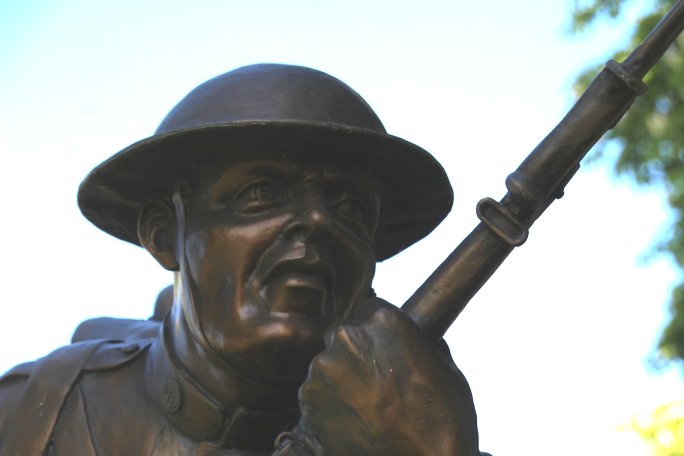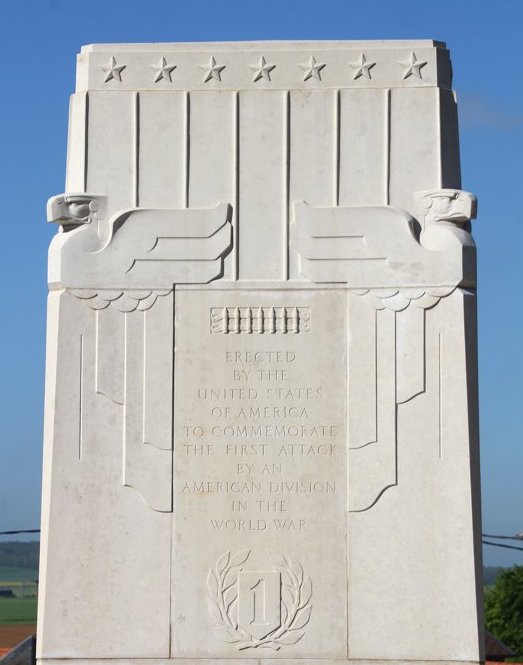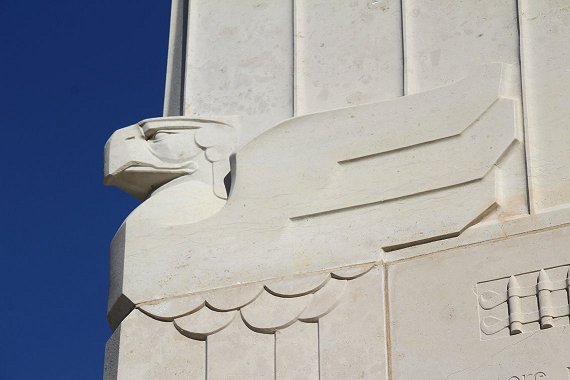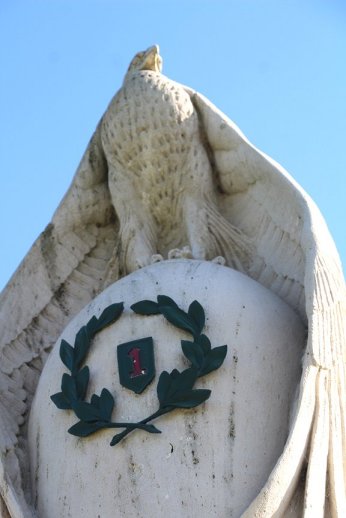
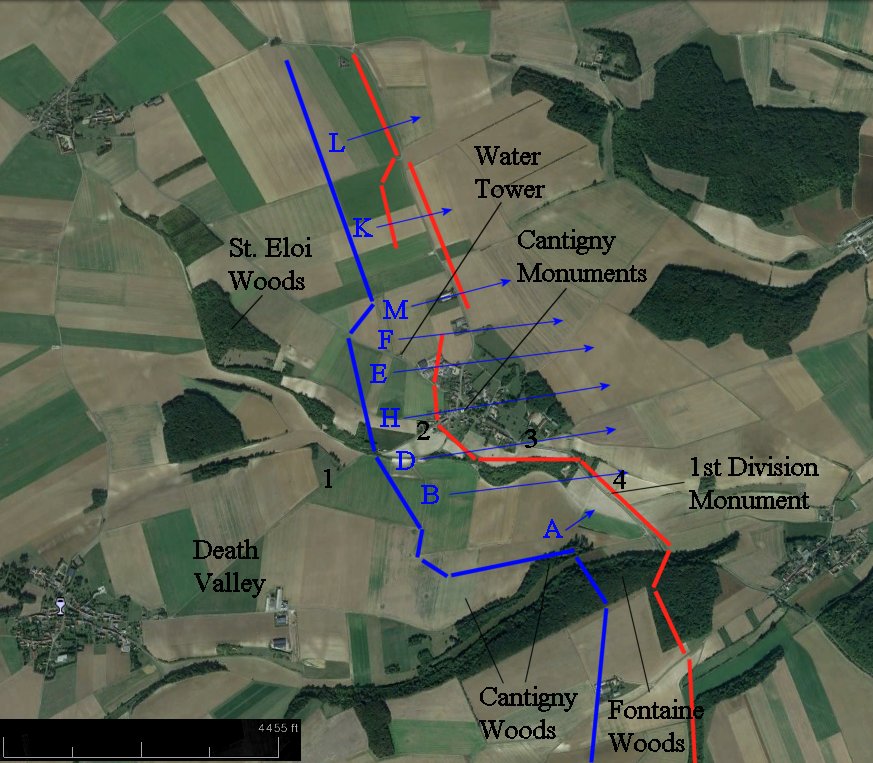




| Further south is a monument to the 1st Division. Company B reached German trenches in this area and battled Germans from further down the trenchline, especially machine gun nests. Company A advanced from Cantigny Woods put got pinned down in the low ground between the lines. |  |
